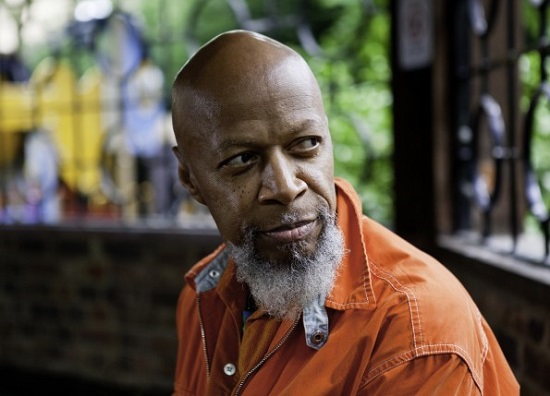Photo by Liam Ricketts
Laraaji first made his mark with Ambient 3: Day Of Radiance, released in 1980. Produced by Brian Eno and released on the Editions EG label, it features Laraaji’s singular zither and hammered dulcimer playing, which oscillates between the yin and yang of the distantly ethereal and cascading, meteor showers of crashing chords. Eno had witnessed Laraaji busking in New York and been immediately impressed.
Laraaji was born Edward Larry Gordon in Philadelphia in 1943. He studied a variety of instruments as a youth including piano and trombone, but following his college studies decided to go to New York and try to make it as an actor and stand-up comedian. This didn’t quite work out but laughter and its therapeutic qualities would find a curious place in the ethos he eventually developed.
Having studied Eastern mysticism, Laraaji then came across a zither in a pawn shop and began to experiment with playing it in expansive and unconventional ways. He was also exposed to large-scale, drifting, electronic works which had yet to be tagged as either Ambient or New Age – the works of Steve Halpern and Klaus Schulze among others. “Music like this was very hard to come by at this point, so it came as a total surprise. But my heart responded to it, I thought, this is a direction I could go in.”
He fell back on his early musical training and became a prolific street performer, playing for hours on end in the streets and parks of Manhattan.
Following the exposure he acquired with Day Of Radiance, Laraaji achieved a measure of success with releases which became popular as tools for meditation, in classes and workshops and mystic study groups. As Ambient achieved an eventual ubiquity in the 1990s, Laraaji’s fortunes ascended and he became sought after as a collaborator, with Japanese group Audio Active (on 1995’s The Way Out Is The Way In), Jonathan Goldman and Phil Gruber. More recently, he released a double live album with Sun Araw, Professional Sunflow (2015). Now comes a brace of albums, Bring On The Sun and Sun Gong which are testimony to his unabated spirit, each track sounding like an excerpt from a music without beginning or end.
Laraaji’s abundance of recordings, the best of which are contained on the anthology Celestial Music 1978-2011 (All Saints) are bracketed as New Age but there is a certain playfulness, an unorthodoxy, an eccentric exuberance which elevates him from what can sometimes be a bland, po-faced and sterile genre. He shares its common values, however – music as a physical, therapeutic healing force, a means of exploring spiritual and mental inner space, of attuning the self to the serene, natural flow of the universe. His, however, is a universe in which laughter is very much permitted.
Laraaji will be performing ‘Sun Dreaming’ alongside Carlos Niño at Cafe Oto, for a special matinee performance on November 19. Find out more and book tickets here
The musician will also be a part of a series of masterclasses at the Fuse Art Space in Bradford. He will be hosting a session on on deep listening, meditation and laughter, which you can find out more about here.
To begin reading his Baker’s Dozen, click the image below.


